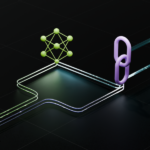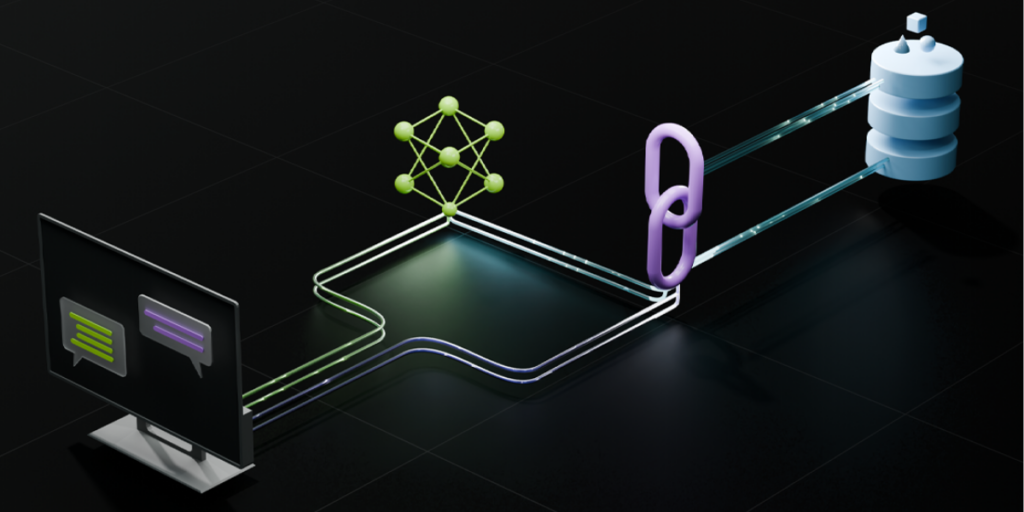Robotic Process Automation (RPA) is the most discussed technology in businesses today. Manufacturing companies want to automate their production lines, and IT companies are seeking to automatize their routine office tasks. At present, businesses realize that their employees spend much time performing things machines can do more effectively and efficiently. The need to implement RPA is the main driver of efficiency, accuracy, and overall growth in the company.
Not only do RPA consulting services boost your productivity, but they’re also highly economical, and the ROI is extremely robust. Mckinsey is a renowned firm for auditing, and has conducted research that showed that businesses should implement RPA to yield anywhere from 30 to 200% for certain companies in the initial year. Based on Automation Anywhere, 98% of IT managers believe that automation is vital to the business process. Fintech, in particular, has the highest percentage of automated processes being implemented.
Knowing how to implement and run an effective automated process, also known as an Intelligent Automation (IA) program, requires a sharp strategy, a thoughtful plan, and the right technology and tools to achieve your operations goals.
In this post, we’ll go through the step-by-step process to implement RPA and explore each step in detail.
What is Intelligent Automation?
Intelligent automation (IA), sometimes called cognitive automation, is the use of automation technologies–artificial intelligence (AI) robotic process automation (RPA), and business process management (BPM)-to enhance and scale decision-making across organizations.
Intelligent automation also simplifies processes, frees up resources, and increases operational efficiency through various applications. For instance, an automobile manufacturer might utilize IA to accelerate production or decrease the risk of human error. Pharmaceutical or life sciences firms could make use of intelligent automation to lower costs and increase resource efficiency when repetitive processes are in place. Insurance companies can utilize intelligent automation to calculate payment amounts, estimate rates, and address compliance requirements.
How does Intelligent Automation Work?
Intelligent Automation combines AI’s brainpower with the strength of automation to transform complex business processes, adjust to changes, and grow. It spans the entire automation journey—discovery, automation, optimization—seamlessly connecting and interacting with humans, systems, and data.
To provide end-to-end automated capabilities, Intelligent Automation harnesses AI techniques like computer vision, natural language processing (NLP), machine learning (ML), and generative AI, which allows it to automate tasks that rely on unstructured or complicated sources of information or aren’t governed by a formal workflow.
These AI tools seamlessly integrate with Robotic Process Automation (RPA) to act and carry out the steps of a process. AI technology sets up the right actions, studies the results of business processes, provides insight, and then guides RPA on the next steps. After that, they end the loop with constant feedback and improvement to enhance and improve. IA drives a process of continuous feedback and learning aimed at refining–and ultimately transforming–operations.
Benefits of Intelligent Automation
Intelligent automation solutions allow companies to use cutting-edge technology to improve efficiency, increase efficiency, and spur innovation. Additionally, intelligent automation helps companies expand their operations without a hitch and achieve greater operational efficiency, flexibility, agility, and competitiveness. Companies that utilize IA solutions enjoy a variety of benefits, which include but not only:
Superior Data Accuracy
Data errors are common throughout operations when they are manually handled, which results in costly work. IA solutions can eradicate errors in data introduced by manual processes. Improved accuracy reduces the risk of costly mistakes and builds confidence in the reliability of data-driven decision-making.
Rapid Scalability
IA solutions are flexible and offer the ability to scale up to meet changing business requirements. Scalability lets companies effectively handle increasing volumes of work without massive human intervention or resource allocation.
Ensure traceability
If you use IA within your company, you’ll have an entire and traceable trail. You’ll be able to track each step from beginning to finish, which will increase your understanding of the process and assist with audits of your finances.
Enhanced Insights
Intelligent automation employs advanced algorithms for machine learning and analytics to extract actionable information from massive data sets. These insights can help make better decisions for strategic planning and identify areas for improvement and enhancement.
What is Robotic Process Automation?
Robotic process automation (RPA) is an IA technique for automating business processes using digital workers. RPA can be used in a variety of ways to simplify processes and eliminate bottlenecks. It uses sophisticated software robots, also known as digital workers that automate repetitive and manual tasks with AI technology, freeing employees to do more valuable tasks.
RPA helps reduce labor expenses, improves process flow, boosts hours returned to the business, and enhances employee and customer satisfaction. Implementing RPA can begin the process of transformation for enterprises, and intelligent automation provides a variety of solutions that allow for a complete transformation of the way work is performed.
How Does RPA Actually Work?
RPA refers to task automation. It uses software robots to carry out tasks by imitating human actions. The tasks they perform include entering data, scheduling appointments, switching between different systems, and the list goes on. This is done to remove the tedious, repetitive tasks from humans’ hands, allowing them to concentrate on more productive strategic initiatives.
But RPA has evolved. That’s what our helpful RPA robot Andy was searching for. IA is merging RPA with artificial intelligence (AI) and business process management (BPM) to boost RPA’s capabilities and transform it into the next generation of RPA bots and digital workers.
RPA and AI combined enable digital workers to take their lessons from previous processes and find more efficient paths for the future. Also, Digital workers can learn from their mistakes and improve. They do this by using the process of machine studying (ML).
Through natural language processing (NLP), digital workers can interpret and comprehend human language. They can also transform handwritten text into a suitable digital format with optical character recognition (OCR).
IA took RPA beyond task automation to include capabilities such as simplifying complex workflows, streamlining all-inclusive business processes, and orchestrating tasks across people, systems, and digital employees.
Benefits of Robotic Process Automation (RPA)
RPA is changing the way companies work. It’s a simple, easy-to-use software that mimics human movements. It will help you save time and money and relieve your employees of boring work.
Let’s look at a brief overview of a few of the advantages of RPA:
Cost-Effective
Robotics is estimated to cut operational expenses by 25% to 50%. Robots operate all day hours and have no time off compared to humans, who work a full-time schedule and take an established number of annual holidays every year. Having robots do some of the manual tasks humans perform can yield tangible gains for the company. Automation could help you recuperate costs in a brief period of time, and afterward, it’s all benefits!
Scalability
RPA aids your business in expanding and growing by increasing the number of tasks you can perform. With higher output quality, demand is likely to rise. With RPA implementation services, businesses can ensure they are using optimized business processes that are scalable across all workflows and connect departments, systems, and even people.
Customer satisfaction
Offering better quality products or customer service improves interaction and increases customer loyalty. A single mistake can have an enormous impact on customers. However, those who get prompt responses or top-quality products and solutions are likely to refer or continue to work with a business.
Accuracy & Quality
RPA provides better solutions to processes with the potential for human error, which increases accuracy. Robots are steady and reliable and never tire, even when required to work continuously. They can also cut down on rework and enhance the quality of output. The greatest benefit is that they follow every rule precisely, giving 100% accuracy of results.
Satisfaction of employees
Eliminating tedious tasks from employees’ workflows allows them to concentrate on more valuable business-related tasks. There are opportunities to help employees learn how to use automation technology to become citizen developers or part of a Center of Excellence (CoE). RPA helps people think of ways to increase the value of automation of business processes. It also allows them to enhance their skills and concentrate on their career development.
Security
Privacy and cybersecurity are essential for every business, particularly those that operate in highly regulated areas. RPA solutions can help protect security concerns by reducing the number of humans interacting with sensitive information. This prevents data breaches or leaks and ensures that companies maintain security. RPA also helps prevent unauthorized access by using triggers for account logouts and two-factor authentication.
Analytics
With RPA, companies have access to reliable information from multiple sources, resulting in better analysis. With IA, companies can get instantaneous insights into their processes to ensure that everything is running smoothly and is aligned with the strategic business goals. A few examples of RPA information include the volume of work, error cycles, and the time it takes to complete.
How To Implement RPA & IA in 6 Steps?
While we’ll discuss the two RPAs and IA in this blog, we’ll focus on IA as it enhances the capabilities of RPA. To successfully integrate IA in any of your processes, it’s important to take into consideration the following elements, and we’ll cover in greater detail later on:
Find Processes to Automate
Before you start, examine your company’s needs and determine where automation could best address the issues. This will ensure an excellent ROI (ROI).
- What problem or opportunity could IA assist you with? Ensure you align your business’s objectives and needs with your automation plan and determine the areas of pain you want to eliminate. Inspire employees across your company to assist in identifying these areas.
- Quick wins are simple procedures that can begin your journey towards automation. They might not achieve the greatest ROI, but they’re easy to automate quickly, can achieve incremental wins that are evident and measurable, and can help you get the support of executives for any future automation efforts.
- Some processes cannot be automated. Analyze your processes to decide which are appropriate for RPA or IA and which are better suited to humans. Examine the possibility of automating a process, taking into consideration the complexity of the process, the data and infrastructure requirements, and any other regulatory requirements.
- You’re looking to automate processes that are efficient, which means they’re not rife with bottlenecks. Automating a process that isn’t working doesn’t help it get better; it only exacerbates the issue. In general, the first priority is to identify and improve your processes before you begin automating everything. Utilize tools to discover processes and identify potential automation opportunities faster.
Get Organization-Wide Buy-In
Before fully implementing your program, you must get approval from the stakeholders and executives. To achieve this, you must explain the reasons and ways IA will enhance business processes and justify the expense. To do this effectively, you will require an argument for business.
- A business case for automation essentially provides evidence, using evidence and use cases, which is why it’s a great idea to automate a job or procedure. The typical business case will include a cost-to-benefit analysis and an estimate of ROI, but it is also important to include any challenges that could arise from adopting IA. Incorporate all the data you gathered from the first step to create your case for business.
- Acceptance of your automation program does not end with the managers and other stakeholders. Create a change management plan to get everyone on board with IA. This could be done through education, setting up specific roles and responsibilities, and participating in the automation planning process. When you solicit ideas for automation from your team, you’re allowing them to be involved in the process and ease concerns about the automation process taking over their work.
Choose the Right IA or RPA Software
The tools or automation platforms you select are as crucial as the processes you choose to automate. Be sure that the tool you choose is compatible with your overall business goals.
- Technology is always changing, and it is important to find suppliers who are innovating and have years of experience in the automation field. Many IA companies offer a basic version of their platform that permits users to run basic automation. However, consider whether the platform allows you to expand your IA/RPA software solution as your business grows.
- Think about who will develop your automation. Certain IA platforms offer simple or no-code automation choices, using drag-and-drop capabilities to quickly and easily create scalable, automated systems. This lets non-technical users build automation with ease. Choose automation software that has an easy user interface, built-in connectivity, integrations, solid governance and support, and flexibility.
Develop an Implementation Plan
The following paragraphs outline how and when you plan to implement IA in your business. The plan should outline what processes will get automated, the person in charge of the project, what human and financial resources are needed, and the timeframe for implementing IA/RPA. This will ensure the smooth implementation of your automation.
- It is best to ensure that you have a well-planned and strategic implementation method before deploying your workforce digitally. This guide walks you through the process of launching, managing, and growing your automation, including workforce strategy, development, design, and operations.
- It’s a good idea to create a Center of Excellence (CoE) to ensure that your automated processes adhere to the top practices and create the best results for your company. The CoE is accountable for identifying automation opportunities, educating and upgrading team members, and ensuring proper governance and standards while reducing risk, remaining ahead of the curve, and innovating. They may also assist in developing the Proof of Concept (POC) that can help you translate your ideas and theories into concrete results.
Test Your Solution
You can test your POC here. Integrate an automated solution into the normal process and observe how it performs. A different option is to run your automated system in a test or “playground” environment. You can then ask your staff to provide feedback on how your digital workers are performing and where improvements can be made. Testing before launching an entire IA/RPA deployment is always good.
- During the testing phase, you’ll monitor your automation for problems and ensure that everything is running smoothly and by the pre-determined goals. Note any issues with your infrastructure or slowdowns.
- Track key measures like precision, processing times, and human involvement. It’s an excellent idea to monitor your employees closely and ask for their input on how your IA/RPA system is working and how it affects their work.
Rollout and Transform
Let your IA into the planned performance zones and keep an eye on it, adjusting it when needed.
- Implementation is only half the automation. The other part is monitoring it to ensure it meets the organization’s goals. The most important aspect of a successful RPA solutions (or Implementation Automation) is ensuring you get the best value for this digital workplace.
- RPA and IA implementation isn’t an event that happens once. Review and improve the automated procedures regularly. Pay attention to changing business and technological requirements. As your company’s RPA maturation increases, consider incorporating advanced features such as cognitive automation or AI-driven decision-making.
Key Trends and Outlook for RPA & IPA
In the rapidly changing business environment, automation technologies such as Robotic Process Automation (RPA) and Intelligent Process Automation (IPA) are more important than ever. These breakthroughs aren’t just concerned with automating work processes but fundamentally changing how companies operate, resulting in unprecedented productivity, precision, and scaling. This article will take a deeper look at the current trends that are shaping the future of automation:
Emerging Trends in RPA
RPA has developed greatly since the beginning of the 2000s, which has given us some exciting opportunities in the coming years.
Integration with Artificial Intelligence and Machine Learning
One of the biggest changes in RPA is the convergence of Artificial Intelligence (AI) and Machine Learning (ML). Traditional RPA is a system that works with structured data and predefined rules. However, integrating AI and ML allows RPA to deal with unstructured data and make choices based on patterns and forecasts. Banking, specifically, has realized the potential of RPA. Future-oriented banks utilize AI-enhanced RPA to identify fraud by studying real-time transactions. This integration allows RPA to adjust to new threats, improving security measures rapidly.
Automation of Complex Workflows
In the beginning, RPA was limited to basic repetitive tasks. Modern advances in technology enable the automation of complex workflows with many decisions and interactions. This is especially beneficial in healthcare industries, where the management of patient data requires precision and conformity with regulations.
Process Mining
Process mining is a new idea in RPA. It involves using algorithms to study the events logs from different systems and pinpoint areas where automation can enhance efficiency and decrease errors. This data-based approach can help businesses find bottlenecks and optimize processes to achieve maximum efficiency.
Scalability and Cloud Adoption
Cloud computing is a major element in the scalability and capacity of RPA solutions. Cloud-based RPA allows flexibility, lower initial costs, and speedier deployment. It also enables sharing and remote access, which is crucial in today’s multi-faceted work environment.
An increasing variety of companies offering RPA solutions have introduced cloud-based RPA platforms that allow enterprises to expand their automation without massive infrastructure investment. This trend will likely continue and make RPA easier for small and medium-sized businesses to access.
Hyperautomation
Hyperautomation refers to the application of various technologies, including RPA Artificial Intelligence, RPA machine learning, and machine learning tools, which work seamlessly to automate entire business processes. This strategy not only enhances efficiency but also improves the overall customer experience.
Emerging Trends in IA
Intelligent Automation (IA) is developing quickly and is driven by technological advances and evolving business requirements. As businesses seek to increase efficiency, lower costs, and enhance customer service, various major developments are emerging in the world of IA. For instance:
Emergence of Autonomous Workflows
One of the most important changes in Intelligent Automation involves the shift to automated workflows. Self-learning software systems were designed to automate all processes from beginning to end with little human intervention.
Machine learning algorithms are used by businesses to create autonomous workflows. This automates complicated tasks that used to depend on a human’s judgment. You can automate many of your business’s processes to increase efficiency. For example, manufacturing firms could use autonomous workflows to improve production lines, reducing the time needed to complete the process and increasing output. As companies increasingly implement these methods, they can expect increased productivity and a shift in how work is organized and carried out.
Rise of Low-Code and No-Code Platforms
The demand for no-code or low-code platforms is growing as companies require user-friendly solutions to automate their processes that allow non-technical users to develop applications. These platforms make it easier to access automation tools and allow workers of diverse departments to participate in process improvement initiatives without requiring special IT expertise.
Low-code and no-code solutions allow businesses to build applications swiftly, reducing the time to market new initiatives. This is a necessity in the fast-paced world of business today. It is possible to reduce the dependence on IT tools for application development to reduce the costs related to software development.
Integration of Generative AI
Another important trend is the incorporation of generative AI in Intelligent Automation tools. Generative AI improves the predictive capabilities of analytics and optimizes resource use by creating synthetic data and simulated different scenarios. Generative AI lets businesses predict future trends more accurately by generating synthetic data that can reflect actual conditions.
Employing generative AI to model different scenarios based on various inputs is also possible. For instance, when it comes to the financial sector, it could simulate economic fluctuations to evaluate the effect they have on investment. It can also help you generate various potential outcomes for your business, which will help your thought tank make educated decisions. The integration of these strategies increases the precision of forecasts and improves the overall efficacy of implementing automated strategies throughout different industries.
Conclusion
In the end, Robotic Process Automation (RPA) and Intelligent Automation (IA) offer companies a chance to improve efficiency, decrease errors, and improve overall productivity. These aren’t just an option but essential tools, particularly in economic instability when companies are trying to lower costs without sacrificing quality.
Instead of continuously recruiting and training employees to perform repetitive tasks, robots offer the most cost-effective solution and are long-term in nature. They are a one-time investment but will provide steady outcomes over time. RPA development and IA simplify complicated processes, allowing employees to focus on more important tasks and enhancing an organization’s overall workflow.
This revolutionary approach will revolutionize businesses looking to streamline their processes by eliminating manual tasks and increasing productivity. As companies continue to adjust to the changing demands of modern times, RPA and IA will be key factors in their success and expansion. This is why these technologies aren’t just useful but essential to remaining ahead in today’s competitive business environment.








